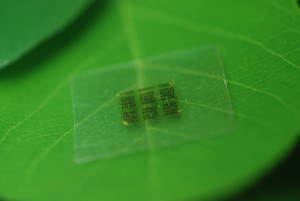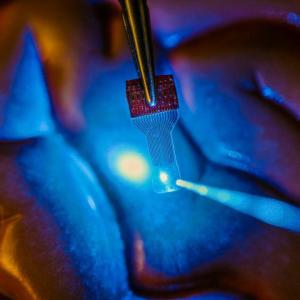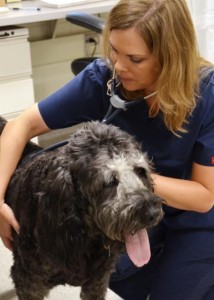Canada’s Situating Science cluster (network of humanities and social science researchers focused on the study of science) has a number of projects mentioned and in its Fall 2014 newsletter,
1. Breaking News
It’s been yet another exciting spring and summer with new developments for the Situating Science SSHRC Strategic Knowledge Cluster team and HPS/STS [History of Philosophy of Science/Science and Technology Studies] research. And we’ve got even more good news coming down the pipeline soon…. For now, here’s the latest.
1.1. New 3 yr. Cosmopolitanism Partnership with India and Southeast Asia
We are excited to announce that the Situating Science project has helped to launch a new 3 yr. 200,000$ SSHRC Partnership Development Grant on ‘Cosmopolitanism and the Local in Science and Nature’ with institutions and scholars in Canada, India and Singapore. Built upon relations that the Cluster has helped establish over the past few years, the project will closely examine the actual types of negotiations that go into the making of science and its culture within an increasingly globalized landscape. A recent workshop on Globalizing History and Philosophy of Science at the Asia Research Institute at the National University of Singapore helped to mark the soft launch of the project (see more in this newsletter).
ARI along with Manipal University, Jawaharlal Nehru University, University of King’s College, Dalhousie University, York University, University of Toronto, and University of Alberta, form the partnership from which the team will seek new connections and longer term collaborations. The project’s website will feature a research database, bibliography, syllabi, and event information for the project’s workshops, lecture series, summer schools, and artifact work. When possible, photos, blogs, podcasts and videos from events will be posted online as well. The project will have its own mailing list so be sure to subscribe to that too. Check it all out: www.CosmoLocal.org
…
2.1. Globalizing History and Philosophy of Science workshop in Singapore August 21-22 2014
On August 21 and 22, scholars from across the globe gathered at the Asia Research Institute at the National University of Singapore to explore key issues in global histories and philosophies of the sciences. The setting next to the iconic Singapore Botanical Gardens provided a welcome atmosphere to examine how and why globalizing the humanities and social studies of science generates intellectual and conceptual tensions that require us to revisit, and possibly rethink, the leading notions that have hitherto informed the history, philosophy and sociology of science.
The keynote by Sanjay Subrahmanyam (UCLA) helped to situate discussions within a larger issue of paradigms of civilization. Workshop papers explored commensurability, translation, models of knowledge exchange, indigenous epistemologies, commercial geography, translation of math and astronomy, transmission and exchange, race, and data. Organizer Arun Bala and participants will seek out possibilities for publishing the proceedings. The event partnered with La Trobe University and Situating Science, and it helped to launch a new 3 yr. Cosmopolitanism project. For more information visit: www.CosmoLocal.org
2.2. Happy Campers: The Summer School Experience
We couldn’t help but feel like we were little kids going to summer camp while our big yellow school bus kicked up dust driving down a dirt road on a hot summer’s day. In this case it would have been a geeky science camp. We were about to dive right into day-long discussions of key pieces from Science and Technology Studies and History and Philosophy of Science and Technology.
Over four and a half days at one of the Queen’s University Biology Stations at the picturesque Elbow Lake Environmental Education Centre, 18 students from across Canada explored the four themes of the Cluster. Each day targeted a Cluster theme, which was introduced by organizer Sergio Sismondo (Sociology and Philosophy, Queen’s). Daryn Lehoux (Classics, Queen’s) explained key concepts in Historical Epistemology and Ontology. Using references of the anti-magnetic properties of garlic (or garlic’s antipathy with the loadstone) from the ancient period, Lehoux discussed the importance and significance of situating the meaning of a thing within specific epistemological contexts. Kelly Bronson (STS, St. Thomas University) explored modes of science communication and the development of the Public Engagement with Science and Technology model from the deficit model of Public Understanding of Science and Technology during sessions on Science Communication and its Publics. Nicole Nelson (University of Wisconsin-Madison) explained Material Culture and Scientific/Technological Practices by dissecting the meaning of animal bodies and other objects as scientific artifacts. Gordon McOuat wrapped up the last day by examining the nuances of the circulation and translation of knowledge and ‘trading zones’ during discussions of Geographies and Sites of Knowledge.
…
2.3. Doing Science in and on the Oceans
From June 14 to June 17, U. King’s College hosted an international workshop on the place and practice of oceanography in celebration of the work of Dr. Eric Mills, Dalhousie Professor Emeritus in Oceanography and co-creator of the History of Science and Technology program. Leading ocean scientists, historians and museum professionals came from the States, Europe and across Canada for “Place and Practice: Doing Science in and on the Ocean 1800-2012”. The event successfully connected different generations of scholars, explored methodologies of material culture analysis and incorporated them into mainstream historical work. There were presentations and discussions of 12 papers, an interdisciplinary panel discussion with keynote lecture by Dr. Mills, and a presentation at the Maritime Museum of the Atlantic by Canada Science and Technology Museum curator, David Pantalony. Paper topics ranged from exploring the evolving methodology of oceanographic practice to discussing ways that the boundaries of traditional scientific writing have been transcended. The event was partially organized and supported by the Atlantic Node and primary support was awarded by the SSHRC Connection Grant.
2.4. Evidence Dead or Alive: The Lives of Evidence National Lecture Series
The 2014 national lecture series on The Lives of Evidence wrapped up on a high note with an interdisciplinary panel discussion of Dr. Stathis Psillos’ exploration of the “Death of Evidence” controversy and the underlying philosophy of scientific evidence. The Canada Research Chair in Philosophy of Science spoke at the University of Toronto with panelists from law, philosophy and HPS. “Evidence: Wanted Dead of Alive” followed on the heels of his talk at the Institute for Science, Society and Policy “From the ‘Bankruptcy of Science’ to the ‘Death of Evidence’: Science and its Value”.
In 6 parts, The Lives of Evidence series examined the cultural, ethical, political, and scientific role of evidence in our world. The series formed as response to the recent warnings about the “Death of Evidence” and “War on Science” to explore what was meant by “evidence”, how it is interpreted, represented and communicated, how trust is created in research, what the relationship is between research, funding and policy and between evidence, explanations and expertise. It attracted collaborations from such groups as Evidence for Democracy, the University of Toronto Evidence Working Group, Canadian Centre for Ethics in Public Affairs, Dalhousie University Health Law Institute, Rotman Institute of Philosophy and many more.
A December [2013] symposium, “Hype in Science”, marked the soft launch of the series. In the all-day public event in Halifax, leading scientists, publishers and historians and philosophers of science discussed several case studies of how science is misrepresented and over-hyped in top science journals. Organized by the recent winner of the Gerhard Herzberg Canada Gold Medal for Science and Engineering, Ford Doolittle, the interdisciplinary talks in “Hype” explored issues of trustworthiness in science publications, scientific authority, science communication, and the place of research in the broader public.
The series then continued to explore issues from the creation of the HIV-Crystal Meth connection (Cindy Patton, SFU), Psychiatric Research Abuse (Carl Elliott, U. Minnesota), Evidence, Accountability and the Future of Canadian Science (Scott Findlay, Evidence for Democracy), Patents and Commercialized Medicine (Jim Brown, UofT), and Clinical Trials (Joel Lexchin, York).
All 6 parts are available to view on the Situating Science YouTube channel.You can read a few blogs from the events on our website too. Some of those involved are currently discussing possibilities of following up on some of the series’ issues.
2.5. Other Past Activities and Events
The Frankfurt School: The Critique of Capitalist Culture (July, UBC)
De l’exclusion à l’innovation théorique: le cas de l’éconophysique ; Prosocial attitudes and patterns of academic entrepreneurship (April, UQAM)
Critical Itineraries Technoscience Salon – Ontologies (April, UofT)
Technologies of Trauma: Assessing Wounds and Joining Bones in Late Imperial China (April, UBC)
For more, check out: www.SituSci.ca
About one week after receiving the newsletter, I got this notice (Sept. 11, 2014),
Congratulations on the nomination and I wish Gordon McQuat and Situating Science good luck in the competition.




